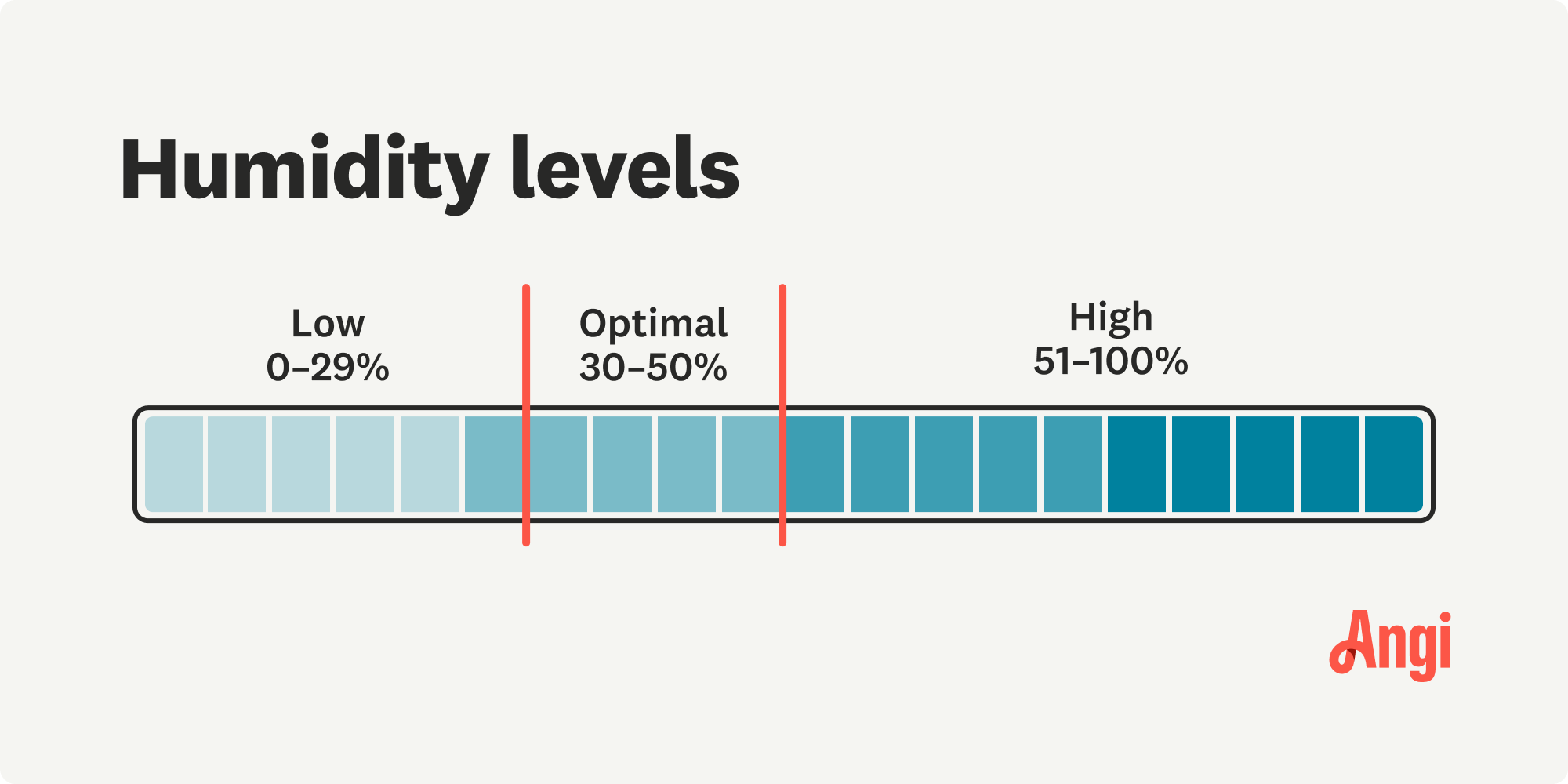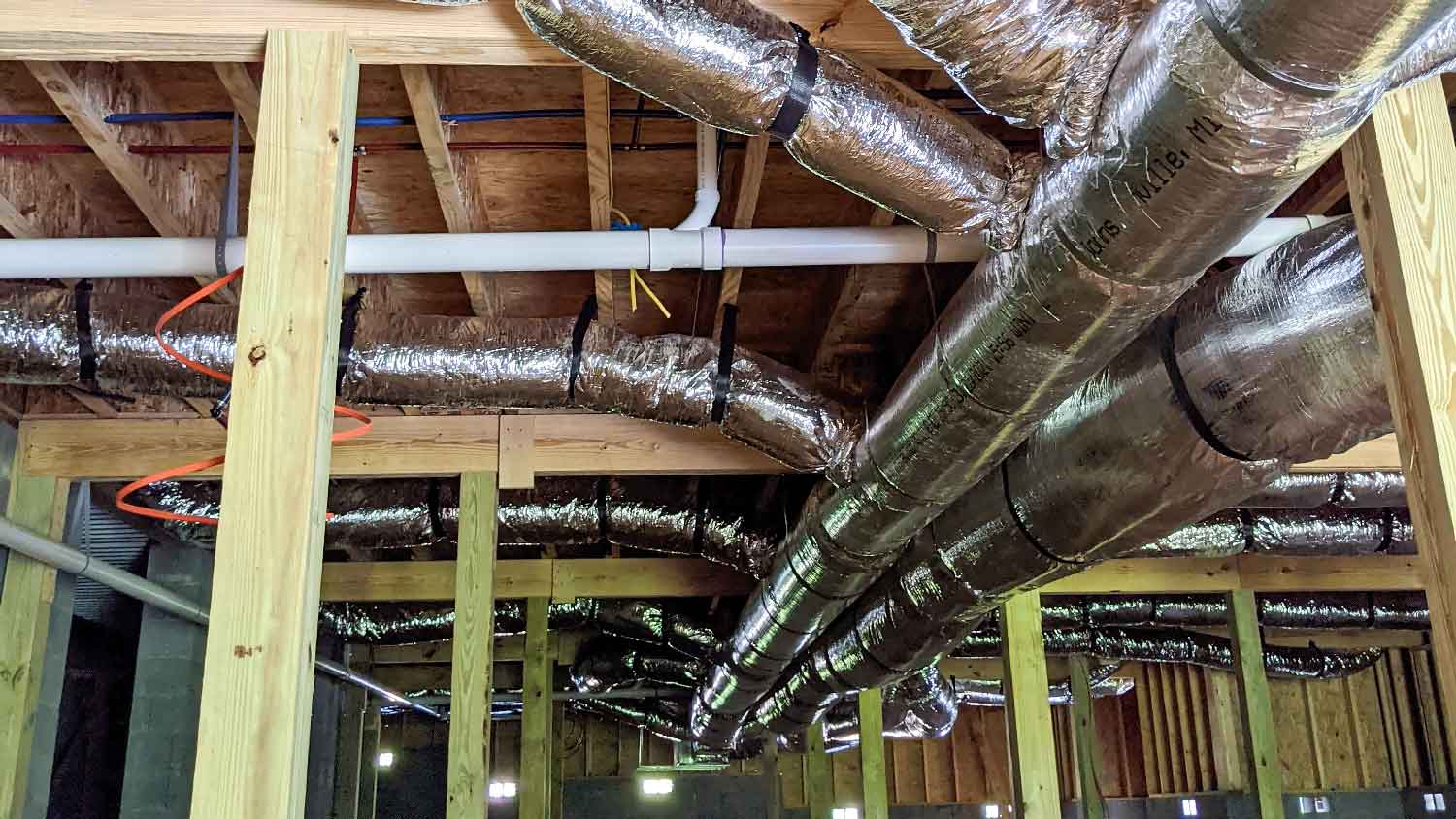
What you’ll pay in Columbus, OH, for furnace repairs depends on many factors. Here’s a breakdown of what can go wrong and the cost to fix those issues.
No more living in a home as dry as the Sahara desert


Humidity levels below 30% are considered low.
Low humidity can cause dry skin and static in the air.
Natural fixes such as steam and houseplants can increase humidity.
When it comes to your home’s humidity levels, moderation is the key to comfort. Indoor humidity should range between 30% and 50%, but if it dips below 30%, you'll likely notice it. Low humidity can cause you to feel physically uncomfortable, increase static electricity, and damage furniture. Here's how to fix low humidity in your house to get the right amount of moisture.
Low humidity signs are different than the signs of mold in a house. Dry skin, chapped lips, or irritation in the nose and throat are common bodily signs you have low humidity in your home. You may notice frequent static electricity shocks or wooden furniture and flooring cracking, warping, or gaping. If your home has wallpaper, it may peel as well.
Low humidity is related to seasonal changes and is most noticeable during winter. During cold weather when the heat is on, the warm air can strip away the moisture. Homes with poor insulation are particularly vulnerable to low humidity levels.

While you may notice signs of low humidity, you will only know for certain if you measure it. A hygrometer is an inexpensive, easy-to-use device that delivers accurate readings of your home's indoor humidity. You can also get a professional test. An indoor air quality test costs between $300 and $600.
The ideal humidity level is between 30% and 50% to create a comfortable living environment. Anything below 30% is considered low humidity and you should take steps to fix it.

Fixing low humidity in your house isn't always a huge, costly task. There are some easy methods you can practice without spending a cent. Or, you can choose a permanent solution that costs a bit more out of pocket.
Humidifiers are designed to release moisture into the air, making it easier to achieve optimal humidity levels. You can choose from different types of humidifiers, including cool mist, warm mist, and ultrasonic models.
When choosing a humidifier, consider the size of the room, ease of maintenance, and noise levels. Whole-house humidifiers connected to your HVAC system provide consistent moisture throughout your home. The humidifier needs to be cleaned to prevent mold and bacteria buildup and should be refilled with fresh water as needed.
You read that right: houseplants offer a natural way to increase indoor humidity. Plants release moisture into the air through a process called transpiration, which helps boost overall humidity levels. Place plants in rooms of your home with the lowest humidity levels for maximum productivity. Keep the plants well-watered and maintained to help them function as natural humidifiers.
Using steam from activities you're already doing each day can effectively add moisture to the air. For example, leave the bathroom door open while taking a hot shower to allow the steam to spread to adjacent rooms. Keeping the door open is also a good way to reduce excessive moisture in a bathroom. Boiling water on the stove is another way to generate steam.
Air leaks around windows, doors, and walls allow dry outdoor air to enter your home, reducing indoor humidity. Inspect for gaps, cracks, or poorly sealed joints, and use caulk or foam sealants to fix them. If your windows and doors are beyond quick fixes because they're outdated or damaged, consider upgrading to energy-efficient upgrades.
Placing the bowls near heat sources like radiators, heaters, or sunny windowsills is a simple and cost-effective way to increase indoor humidity. The warmth from your heating system will cause the water to evaporate gradually, adding moisture to the air.
Clean and refill the bowls regularly to prevent mold or bacterial growth. Position the bowls in areas where it's unlikely to be knocked over or disturbed. However, if you have pets or young kids at home, this method likely isn’t for you.
From average costs to expert advice, get all the answers you need to get your job done.

What you’ll pay in Columbus, OH, for furnace repairs depends on many factors. Here’s a breakdown of what can go wrong and the cost to fix those issues.

Discover the true window AC unit installation cost to learn about labor, permits, and ways to save on your window AC project.

Discover the cost to install ductwork. Learn about average prices, cost factors, and tips to save money on your ductwork installation project.

Learn how to add Freon to your AC unit with our step-by-step guide, and keep your home cool with a properly functioning AC unit.

A central humidifier can make dry winter air more comfortable indoors. Before your installation, discuss these whole-house humidifier questions with a pro.

Do you have a clogged AC drain line? We dig into the reasons behind those pesky blockages and how to clear them for optimal AC performance.